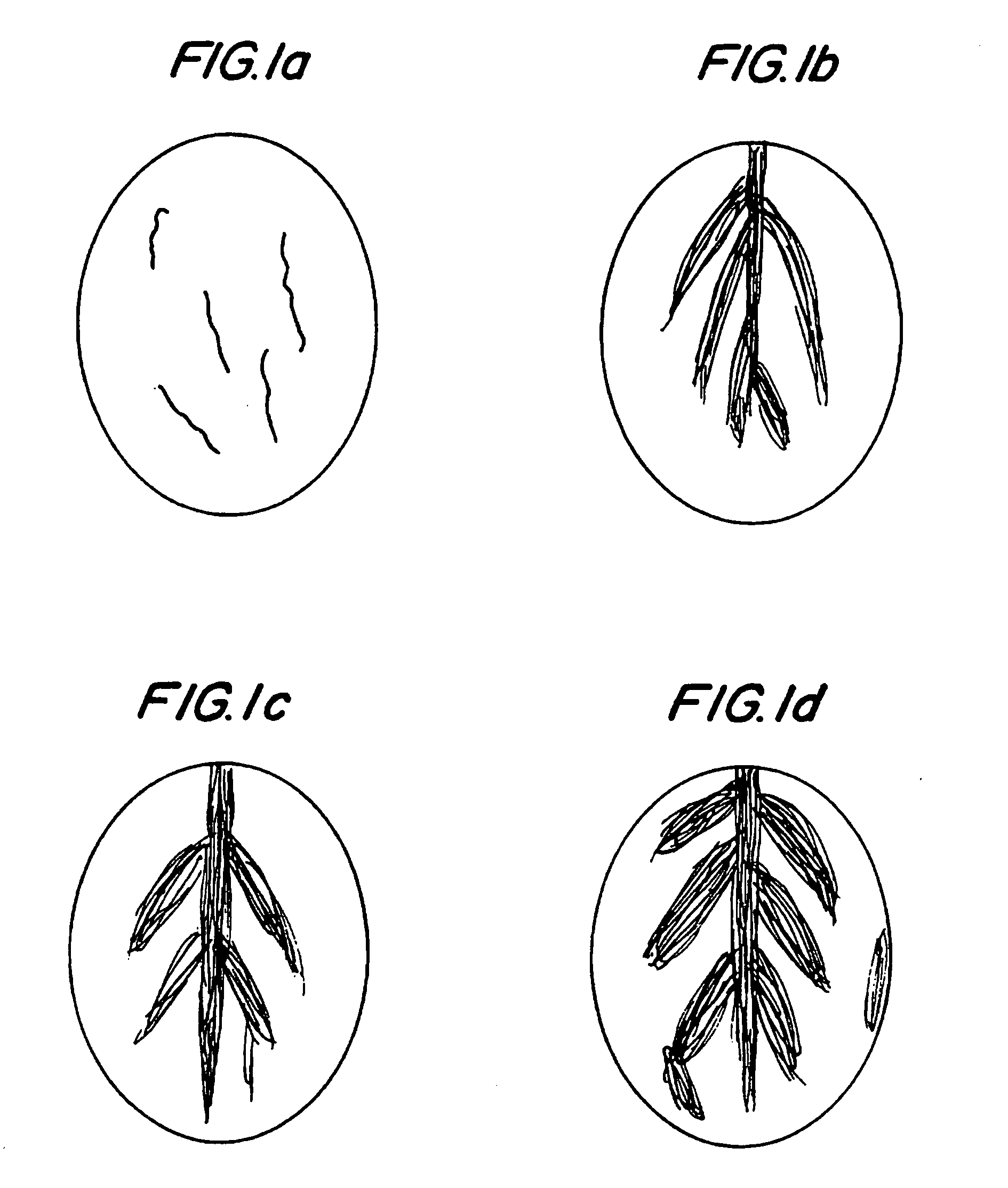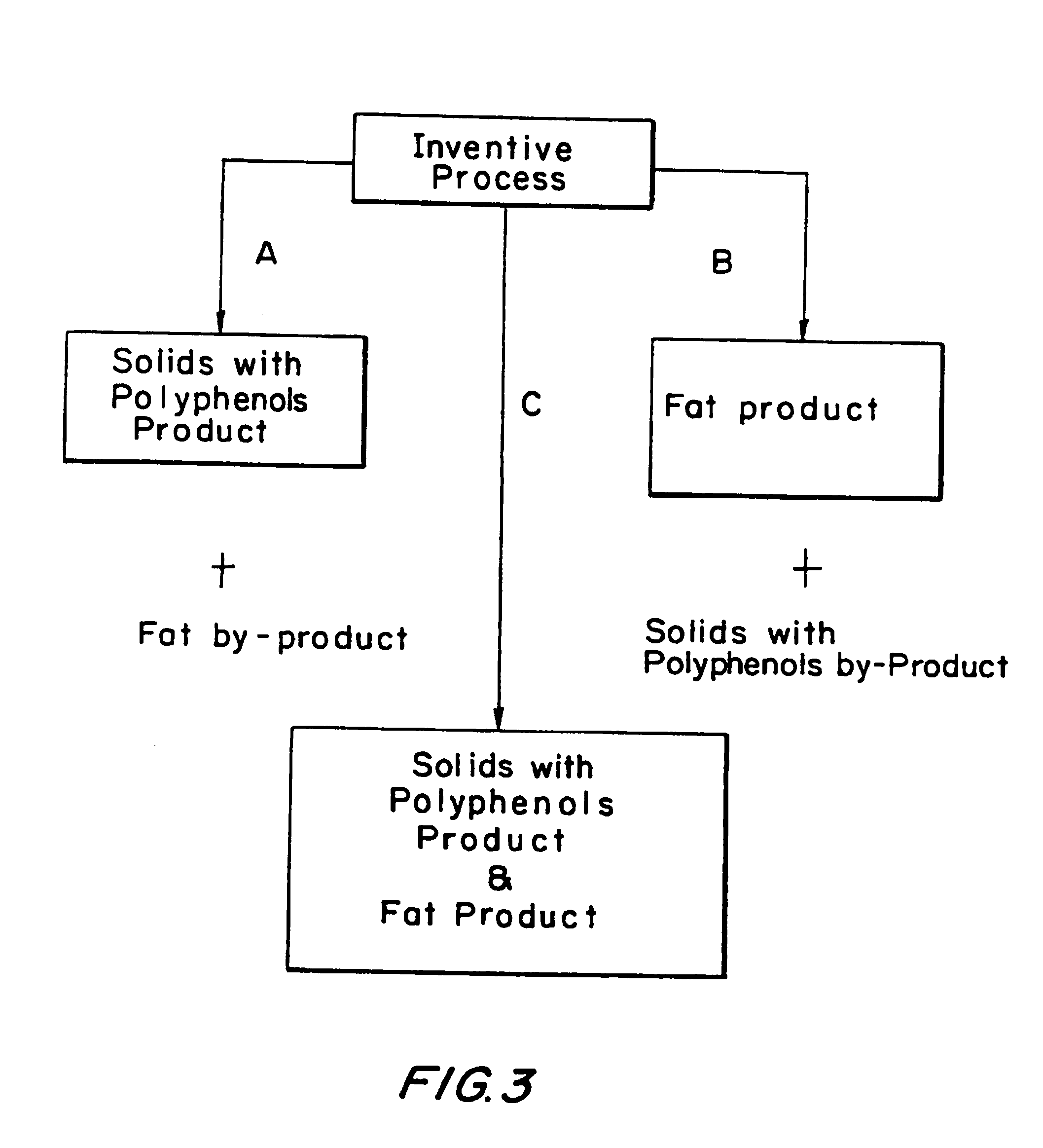Procyanidin-L-arginine combinations
a technology of procyanidin and arginine, which is applied in the field of cocoa components, can solve the problems of affecting the quality of cocoa solids, not being typically available, and current cocoa bean cleaning technology being limited in separation, so as to improve the health of a mammal, and enhance the level of cocoa polyphenols
- Summary
- Abstract
- Description
- Claims
- Application Information
AI Technical Summary
Benefits of technology
Problems solved by technology
Method used
Image
Examples
example 1
Cocoa Source and Method of Preparation
[0341] Several Theobroma cacao genotypes which represent the three recognized horticultural races of cocoa (Enriquez et al., Cocoa Cultivars Register IICA, Turrialba, Costa Rica 1967; Engels, Genetic Resources of Cacao: A Catalogue of the CATIE Collection, Tech. Bull. 7, Turrialba, Costa Rica 1981) were obtained from the three major cocoa producing origins of the world. A list of those genotypes used in this study are shown in Table 2. Harvested cocoa pods were opened and the beans with pulp were removed for freeze drying. The pulp was manually removed from the freeze dried mass and the beans were subjected to analysis as follows. The unfermented, freeze dried cocoa beans were first manually dehulled, and ground to a fine powdery mass with a TEKMAR Mill. The resultant mass was then defatted overnight by Soxhlet extraction using redistilled hexane as the solvent. Residual solvent was removed from the defatted mass by vacuum at ambient temperatur...
example 2
Cocoa Polyphenol Extraction Procedures
A. Method 1
[0342] Cocoa polyphenols were extracted from the defatted, unfermented, freeze dried cocoa beans of Example 1 using a modification of the method described by Jalal and Collin, Phytochemistry 6 1377-1380 (1978). Cocoa polyphenols were extracted from 50 gram batches of the defatted cocoa mass with 2×400 mL 70% acetone / deionized water followed by 400 mL 70% methanol / deionized water. The extracts were pooled and the solvents removed by evaporation at 45° C. with a rotary evaporator held under partial vacuum. The resultant aqueous phase was diluted to 1 L with deionized water and extracted 2× with 400 mL CHCl3. The solvent phase was discarded. The aqueous phase was then extracted 4× with 500 mL ethyl acetate. Any resultant emulsions were broken by centrifugation on a Sorvall RC 28S centrifuge operated at 2,000×g for 30 min. at 10° C. To the combined ethyl acetate extracts, 100-200 mL deionized water was added. The solvent was removed by...
example 3
Varying the Levels of Cocoa Polyphenols Via Manipulating the Degree of Fermentation
[0345] Cocoa beans (T. cocoa, SIAL 659) were subjected to varying degrees of fermentation by removing and analyzing samples of beans taken from a mass of fermenting beans at varying periods of time of fermentation ranging from t0 (time=zero hours) to t120 (time=120 hours). The results are shown in Table 4.
TABLE 4Procyanidin Levels ppm (μg / g) in defatted powderwith varying degrees of fermentationOligomerSAMPLEMonomerDimerTrimerTetramerPentamerHexamerHeptamerOctamerNonamerDecamerUndecamerTotalA - t021,92910,07210,1067788531132421311626422146tr60,753B - t2421,088976291197094477429061364608361176tr57,252C - t4820,887989294747337490629291334692412302tr58,165D - t96955257805062336021401160464254138trND27,910E - t12085814665407025271628888326166123trND22,974
*ND = none detected
*tr = trace (<50 μg / g)
PUM
 Login to View More
Login to View More Abstract
Description
Claims
Application Information
 Login to View More
Login to View More - R&D
- Intellectual Property
- Life Sciences
- Materials
- Tech Scout
- Unparalleled Data Quality
- Higher Quality Content
- 60% Fewer Hallucinations
Browse by: Latest US Patents, China's latest patents, Technical Efficacy Thesaurus, Application Domain, Technology Topic, Popular Technical Reports.
© 2025 PatSnap. All rights reserved.Legal|Privacy policy|Modern Slavery Act Transparency Statement|Sitemap|About US| Contact US: help@patsnap.com



